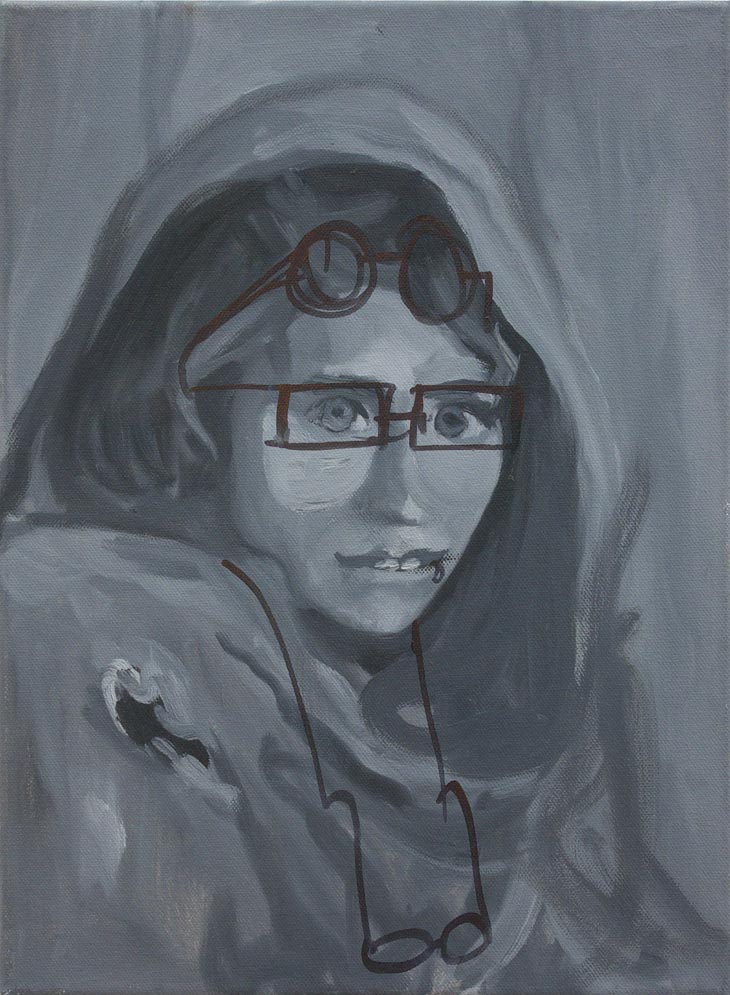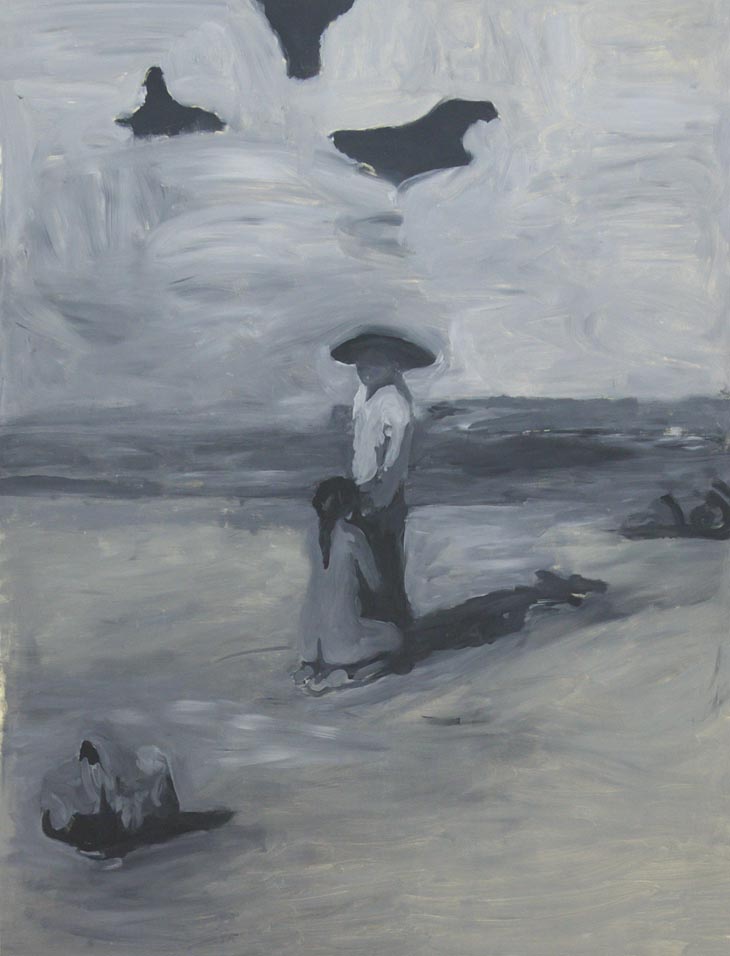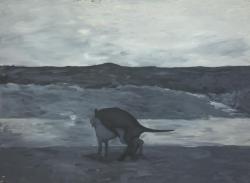


Tom Ellis
Tom Ellis’s Rachtwurst 2 takes as its subject Steve McCurry’s famous photograph Afghan Girl, which was used on the cover of the June 1985 issue of National Geographic and became an international icon for the Afghan conflict. The girl in the photograph was an unknown refugee and her identity wasn’t discovered until 2002; though Sharbat Gula’s face has become one of the most recognisable images of the 20th century, she was completely unaware of its existence or impact. Ellis paints this image in humble scale and defaces the portrait with marker pen. By degrading the image Ellis deconstructs this historical moment, ifying its propaganda power and highlighting the gulf between cultural mythology and personal reality. Ellis describes this work as “prising the image from the jaws of failure.”
Ellis’s work deals with the mechanisms of culture production. “Received modes and styles of working, stolen ideas, copies and replays of cultural moments are as real to me as anything else. The strategies of blow-up, monochrome, rip-off and repetition are really just all ways of pursuing this one basic aim to produce a work that exists independently of me,” Ellis explains. The Dogs is a blow-up of a small, full-colour oil painting that Ellis made combining a found image and a landscape he painted from life in 1998. By stripping the image of colour and enlarging it to monumental proportions Ellis aggrandises the crudeness and banality of the subject and reinvests these attributes with power and importance.
“My imagery is drawn from imagination, from direct experience, from mass media and from art history to question what constitutes authentic experience. In a world overflowing with images nothing and everything is a worthwhile subject; nothing and everything is an unmediated, direct, and personal experience. By the time I come to finishing a painting, especially the blow-ups, I have to an extent created the illusion that I am working with a ready-made. For a work to be successful I have to have somehow disowned its aesthetic decisions by the time it is complete. I love finding some odd, mysterious, unknowing painting in a junk shop by some unknown artist/craftsman: I can enjoy it for what it is in all its glory and all its failure – that situation is how I want to experience my own work.”


